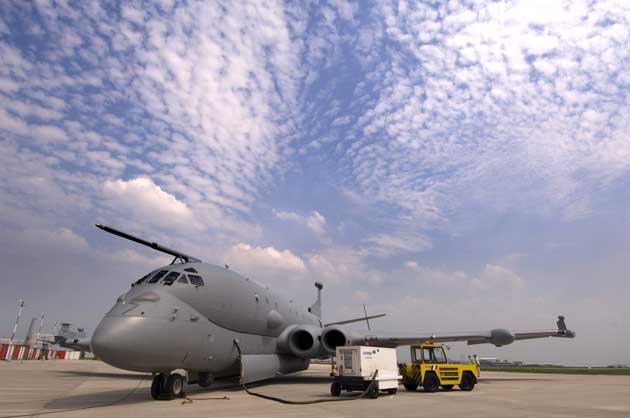Defence minister glossed over Nimrod safety fears
Bereaved relatives were not told of 26 faults which inspection found could threaten aircraft's safety

A report into the safety of Britain's ageing fleet of Nimrod spy planes, which a defence minister claimed did not reveal "any significant airworthiness issues", exposed almost 1,500 faults – 26 of which threatened the aircraft's safety.
Eight of the faults posed risks of fire and explosion, the cause of the catastrophic loss in September 2006 of a Nimrod in Afghanistan. Fourteen servicemen died after leaking fuel was ignited by a hot air pipe, causing the aircraft to explode.
The failings were discovered after the Ministry of Defence ordered an inspection of a single Nimrod. The order followed comments by the coroner, who said the plane had "never been airworthy".
The inspection was carried out at RAF Boscombe Down in Wiltshire late last year by the defence engineering company QinetiQ.
Its report, seen by The Independent on Sunday, found that the initial general condition survey – a visual inspection of the plane – revealed 1,495 "observations", 26 of which had "potential airworthiness implications".
These included chafed wiring, damage to an oil pipe and chafed fuel pipes, all of which could have led to a "fire and explosion". A further nine observations were categorised as "serious engineering issues requiring immediate action".
The MoD ordered the rapid rectification of all the problems on the ageing Nimrod fleet. However, 12 of the 18-strong fleet remain grounded while aircrews fix the problem that resulted in the explosion in Afghanistan.
With repairs under way – but not yet complete on two-thirds of the fleet – the Defence minister Bob Ainsworth wrote to families of those servicemen killed, stating that the "report by QinetiQ on the Nimrod has been received and it does not identify any significant airworthiness issues".
The letter from Mr Ainsworth also made no mention of the fact that the MoD had ordered a thorough strip-down of the Nimrod to see whether there were any deeper, less visible problems.
Graham Knight, whose son, Sgt Ben Knight, 25, died in the Afghanistan explosion, said: "If Bob Ainsworth sent this letter to reassure relatives then he failed to do so. The QinetiQ report states there were 26 observations categorised as having potential airworthiness implications. He says the fleet remains airworthy and safe. Given the fact that only six Nimrods have had their hot air ducts replaced and the remaining 12 can't fly after 31 March, to say the fleet remains airworthy and safe is a gross exaggeration when only one-third are airworthy."
Some of the families of those who died in the Nimrod disaster are now taking legal action against the MoD. A court case had been due to start on 1 May, but has been delayed.
The families of 10 service personnel who died when a Hercules aircraft was shot down over Iraq announced that they too would be taking legal action, after an inquest found that if the aircraft had been fitted with explosion suppressant foam – as had been recommended – it might have been saved.
An MoD spokesman said: "We take the safety of our Nimrod fleet very seriously. That is why we carried out this tear-down to find out as much as we possibly could about the fleet's condition. A team made up of BAE/QinetiQ/MOD has thoroughly investigated all of QinetiQ's findings and are unanimous in their conclusion that the aircraft remains safe to fly. We are implementing all of the team's recommendations."
Join our commenting forum
Join thought-provoking conversations, follow other Independent readers and see their replies
Comments